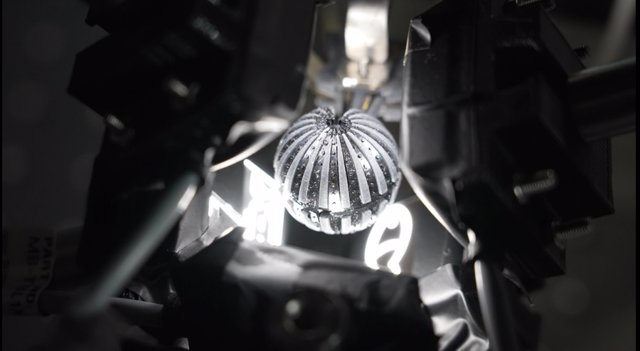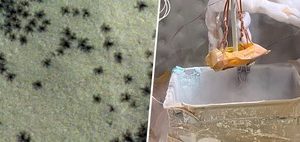amphibian artificial eye – MIT
Aug. 5 () –
Scientists led by MIT have developed a new artificial vision system that closely reproduces the vision of the fiddler crab and is operational both outdoors and underwater.
Affectionately known as the beckoning crab, as it appears to be beckoning with its huge claws, this semiterrestrial species has an amphibious imaging capability and an extremely wide field of view, since all current systems are limited to hemispherical.
The new artificial eye, which resembles a small, largely nondescript spherical black ball, makes sense of what it receives through a mix of materials that process and understand light. The scientists combined an array of planar microlenses with a graded refractive index profile and an array of flexible comb-patterned photodiodes, all wrapped up in the 3D spherical structure. This setup meant that light rays from multiple sources would always converge on the same point on the image sensor, regardless of the refractive index of its surroundings.
An article on this system appears in the July issue of the magazine Nature Electronics.

Both amphibious and panoramic imaging capabilities were tested in experiments in the air and on water by imaging five objects with different distances and directions, and the system provided consistent image quality and a field of view of almost 360 degrees in land and water environments. He could see both underwater and on land, where previous systems were limited to a single domain.
“This is a spectacular piece of non-planar imaging and optical engineering, combining bio-inspired design aspects and advanced flexible electronics to achieve unique capabilities not available in conventional cameras,” he says. it’s a statement John A. Rogers, a professor of materials science and engineering, biomedical engineering and neurological surgery at Northwestern University, who was not involved in the work. “Potential uses range from population surveillance to environmental monitoring.”














Add Comment